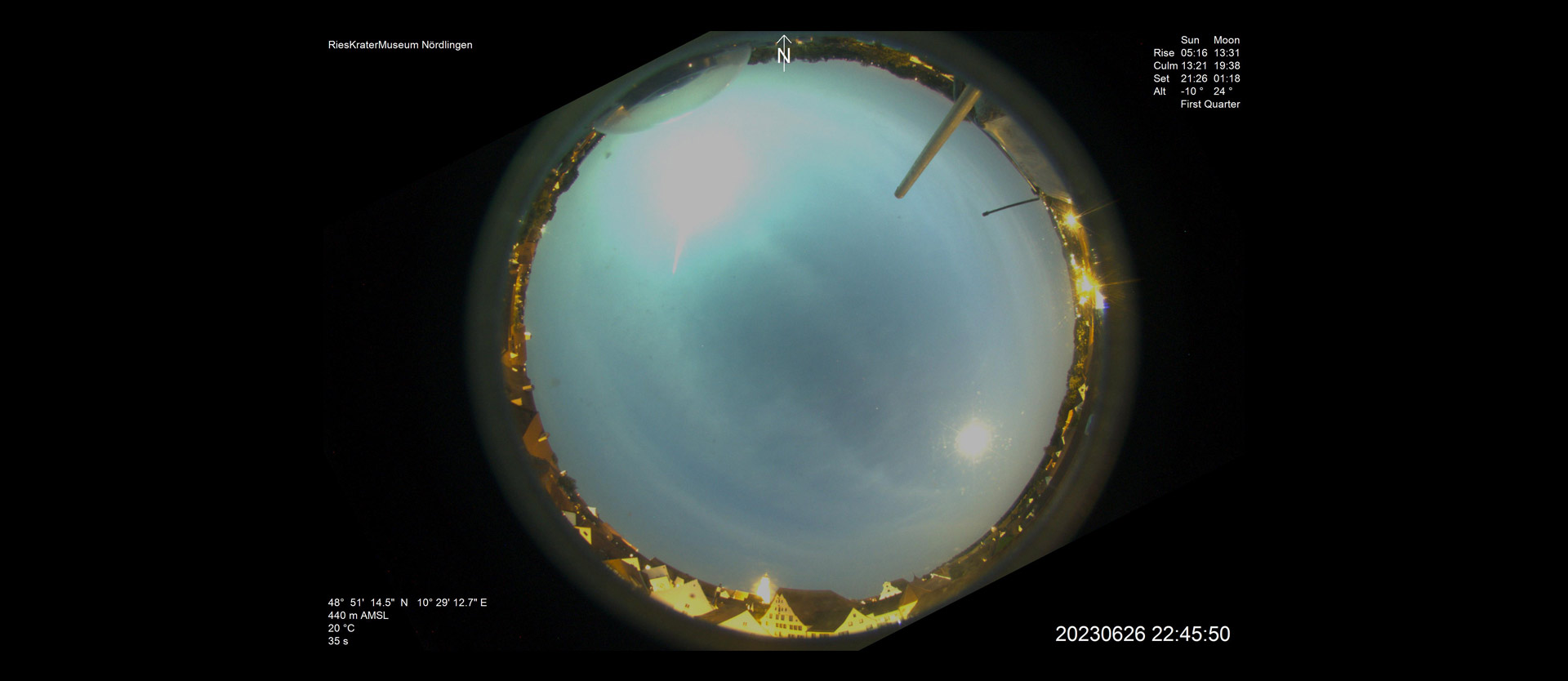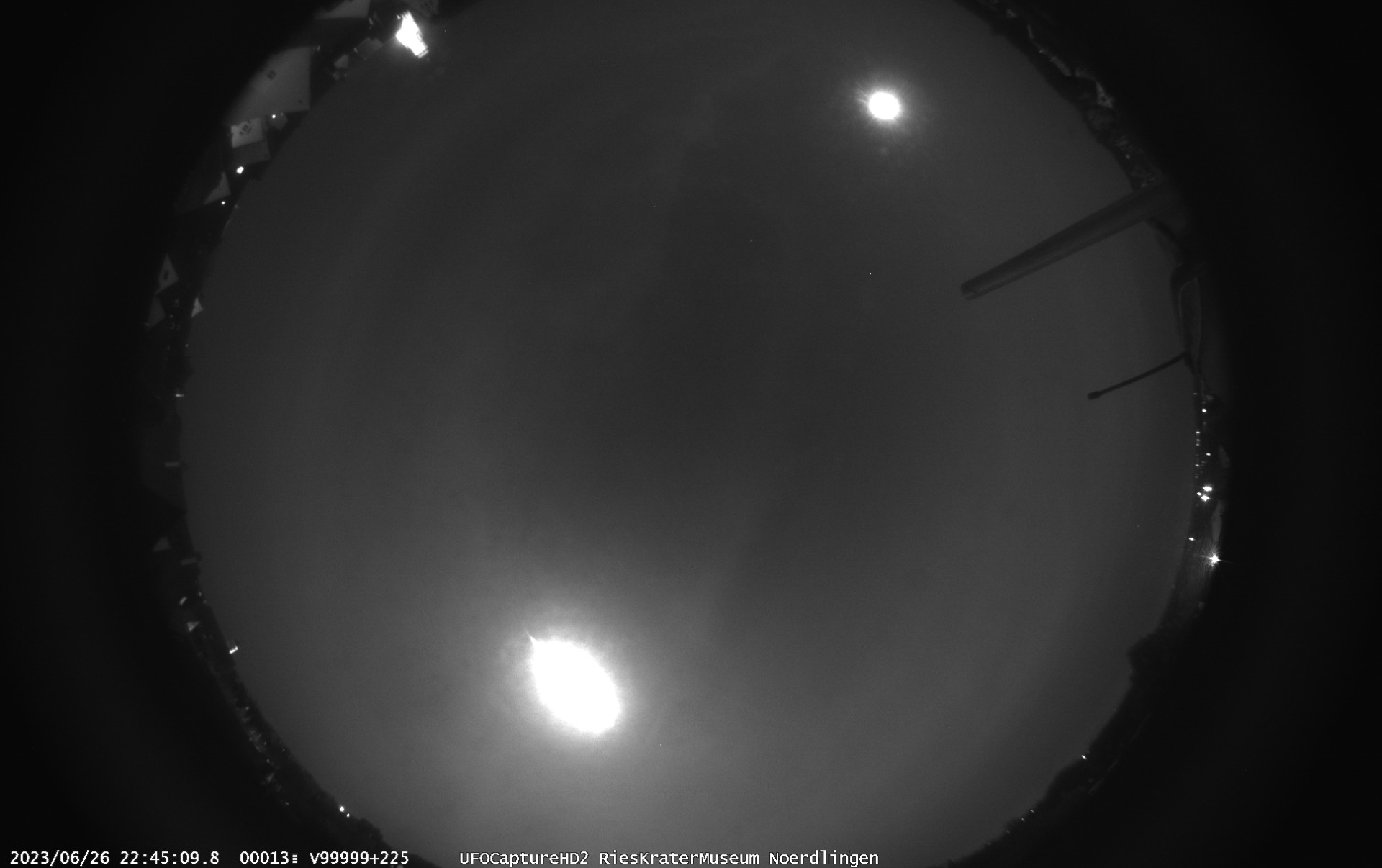
Filmed while burning up

"The green coloration of the light trail is probably due to detached magnesium or nickel atoms from the meteor as it entered the Earth's atmosphere," explained Prof. Stefan Hölzl, director of the RiesKraterMuseum Nördlingen. The body was probably about one meter in size and entered the Earth's atmosphere at a speed of about 15 meters per second, or more than 50,000 kilometers per hour. There it was slowed down and its surface became extremely hot. Molten particles reacted with the gas molecules in the atmosphere, creating the green plasma glow.
Every year, about 10-20 so-called meteoroids fall on Germany, i.e. small celestial bodies of this size that fly through space. If they are seen as bright bodies in the night sky, they are called meteors. If they or fragments of them land on the earth's surface, they are called meteorites.

The images of the black and white camera taken in short time intervals show the extraordinarily fast approach of the meteor. (Image: RiesKraterMuseum)
Only very rarely it is possible to observe such events, worldwide only about one to ten times per year. Most meteoroids fall either during the day, in bad weather or in very lonely areas. Statistically, therefore, meteors do not pose much of a threat to us.
Whether the meteor now observed burned up completely is still unclear. After evaluations of its fall curve and the observation data, one or more fragments of the meteorite could possibly be found. In the RiesKraterMuseum in Nördlingen visitors can admire in the meantime among others the two well-known meteorites "Neuschwanstein" and "Chelyabinsk". And maybe one or the other fragment of the latest event - if ever found - will find its way into the museum.
All images also on: www.rieskrater-museum.de/leuchtspur-ueber-bayern/












